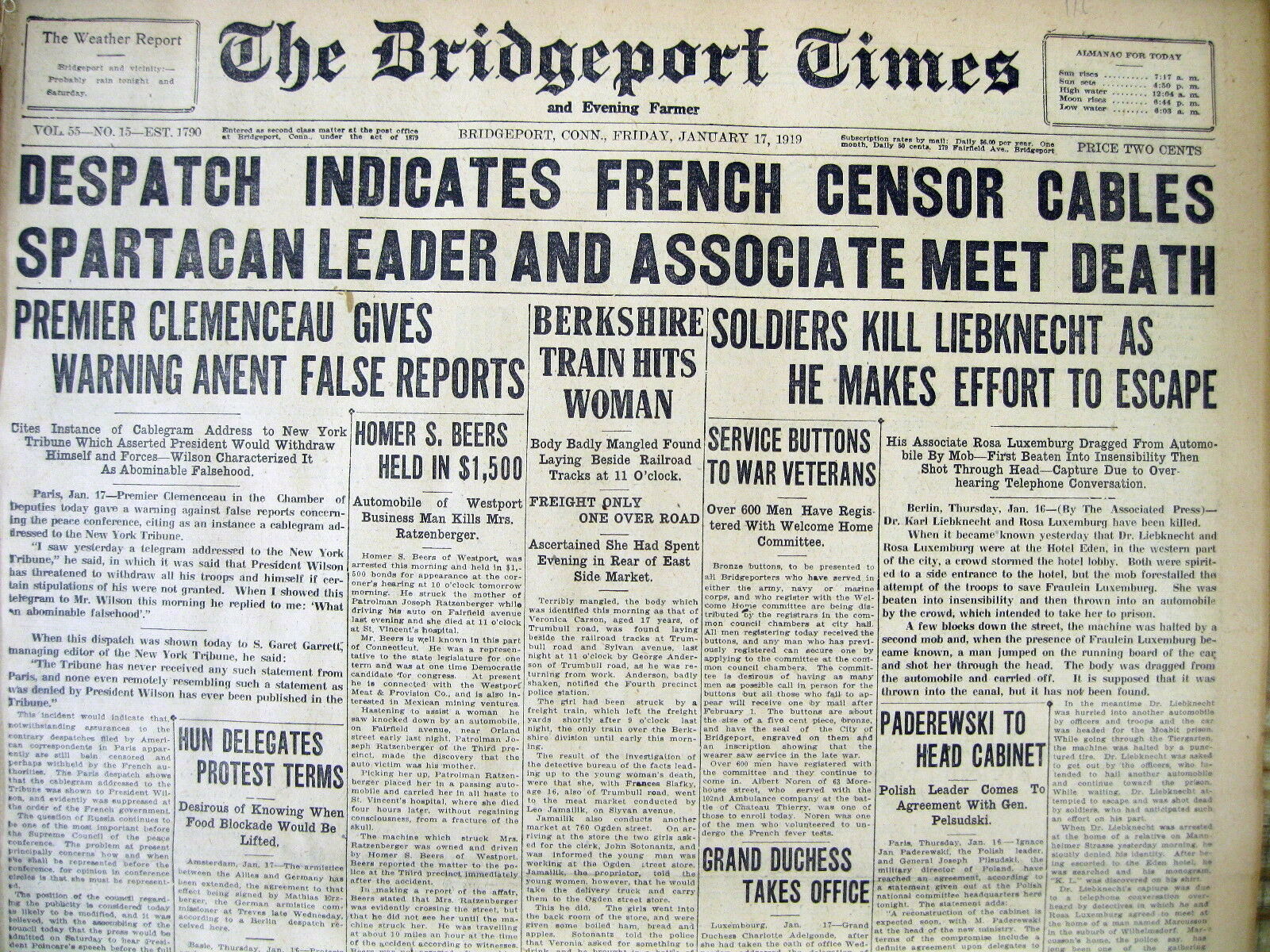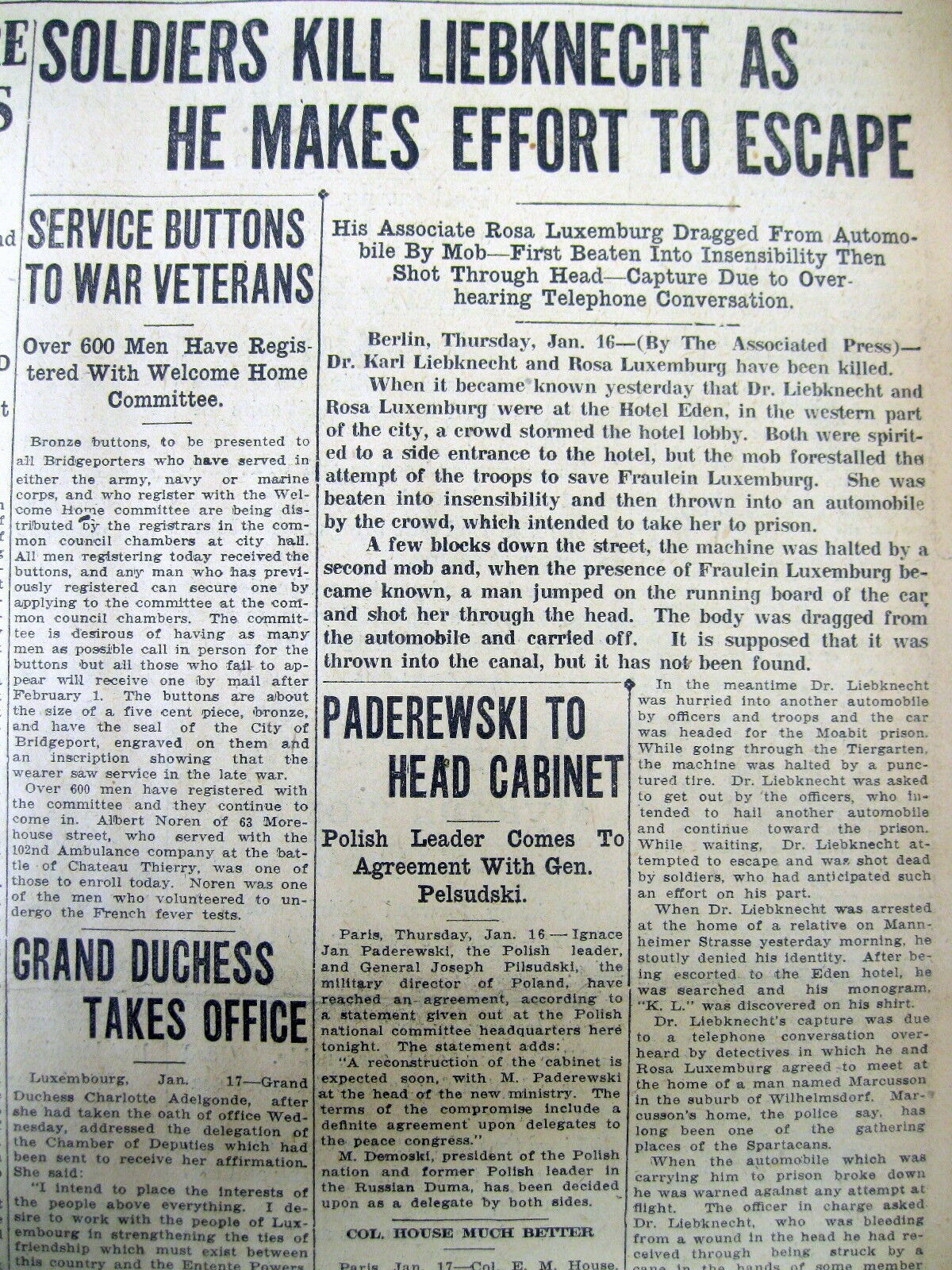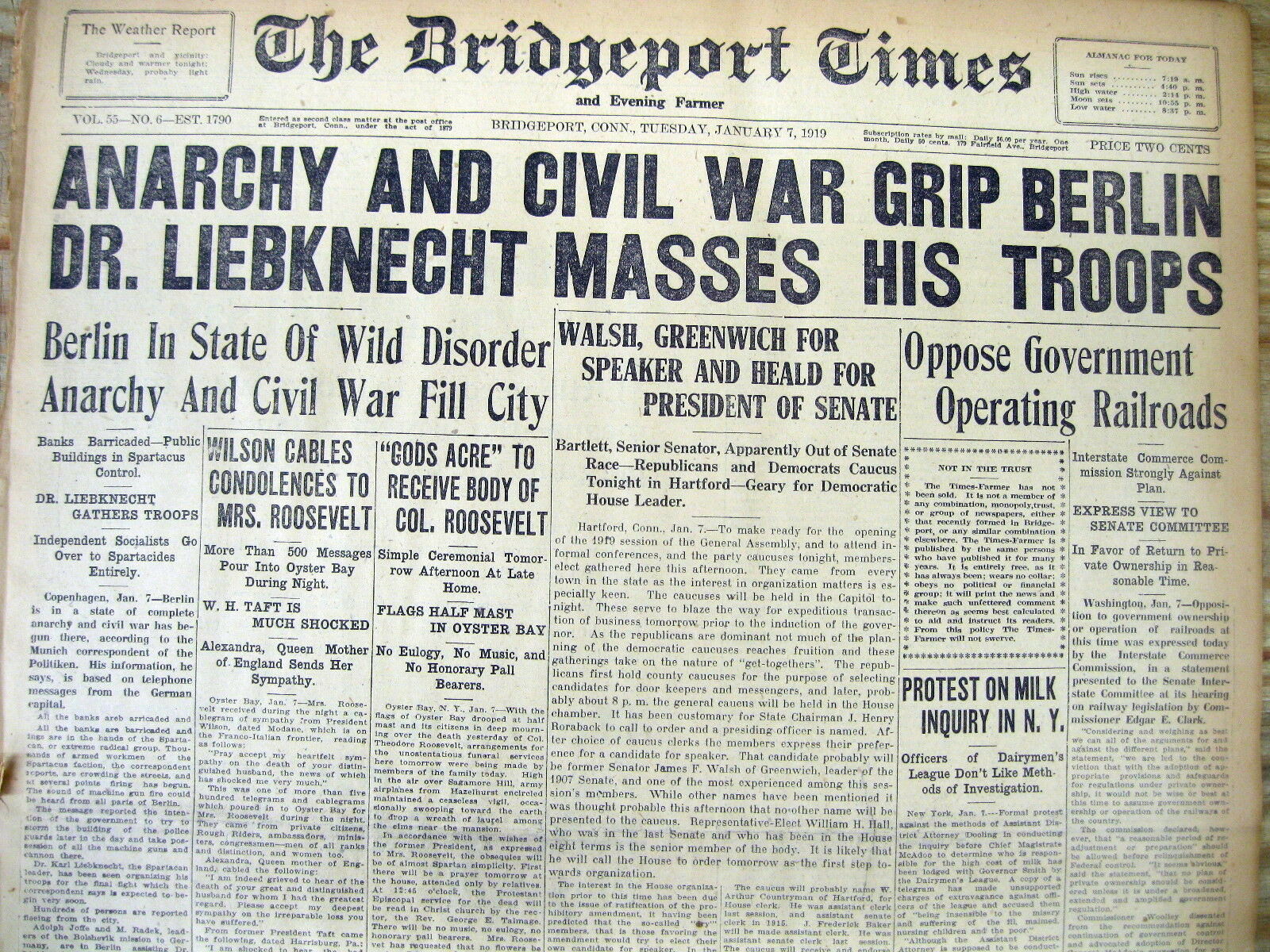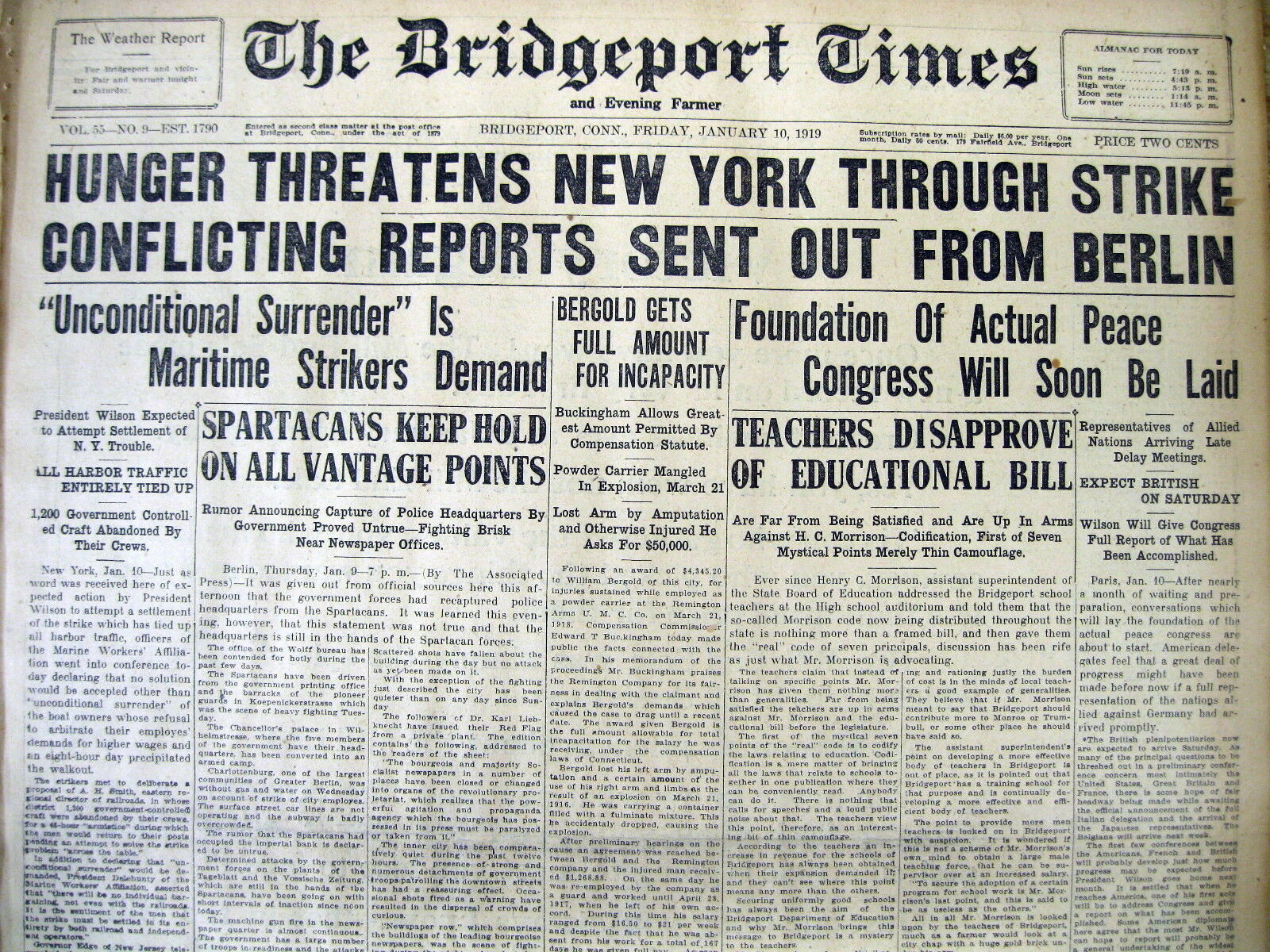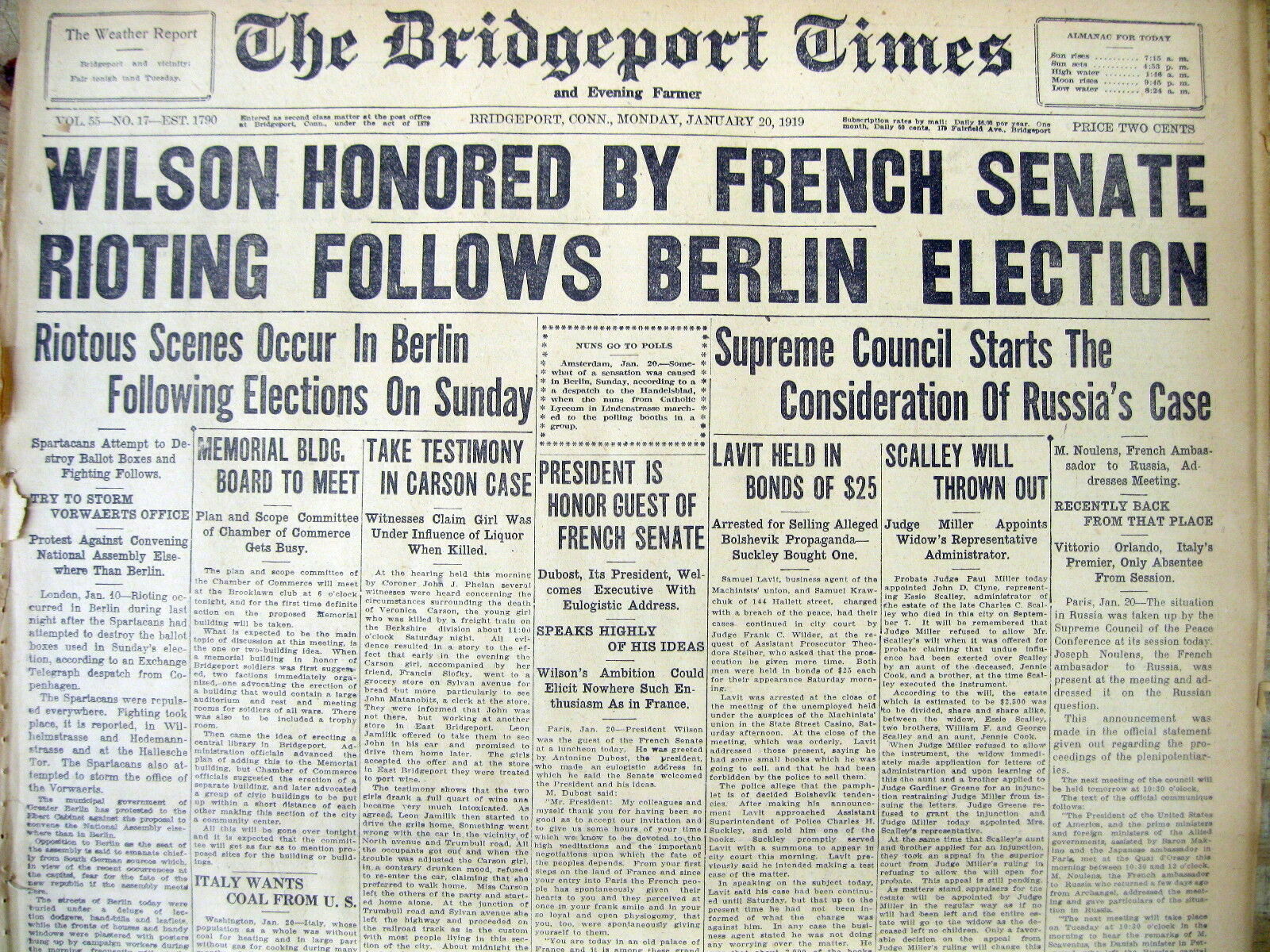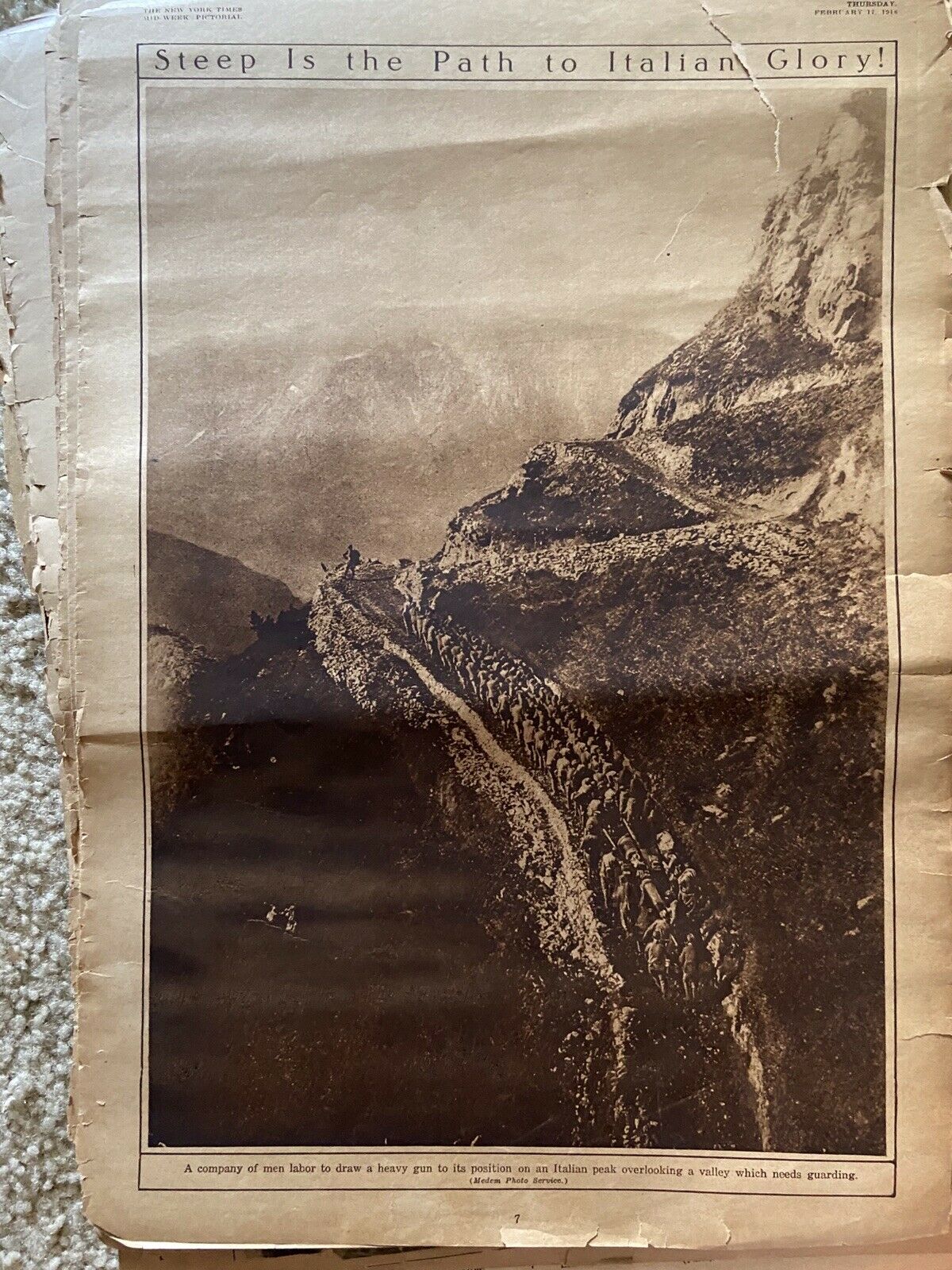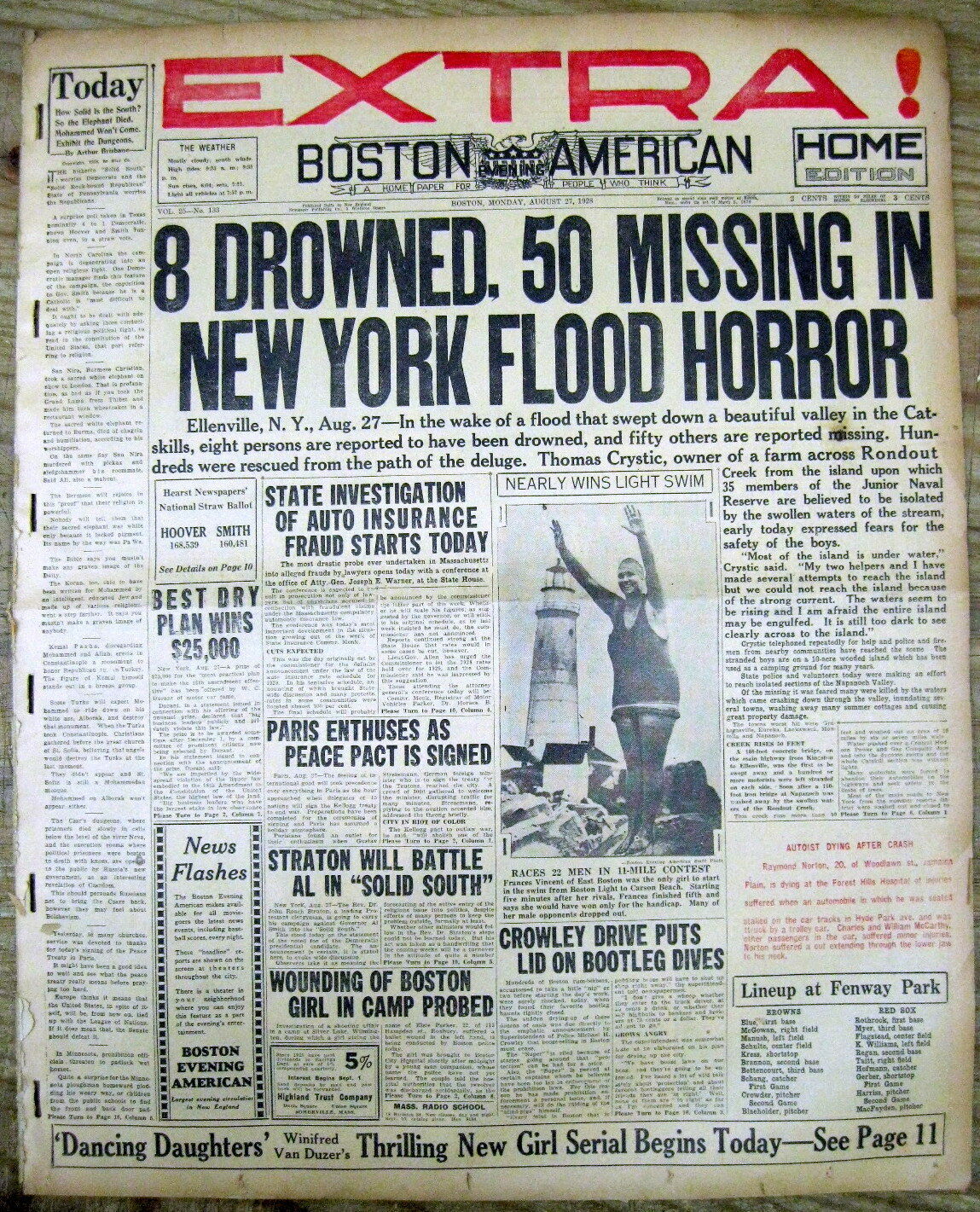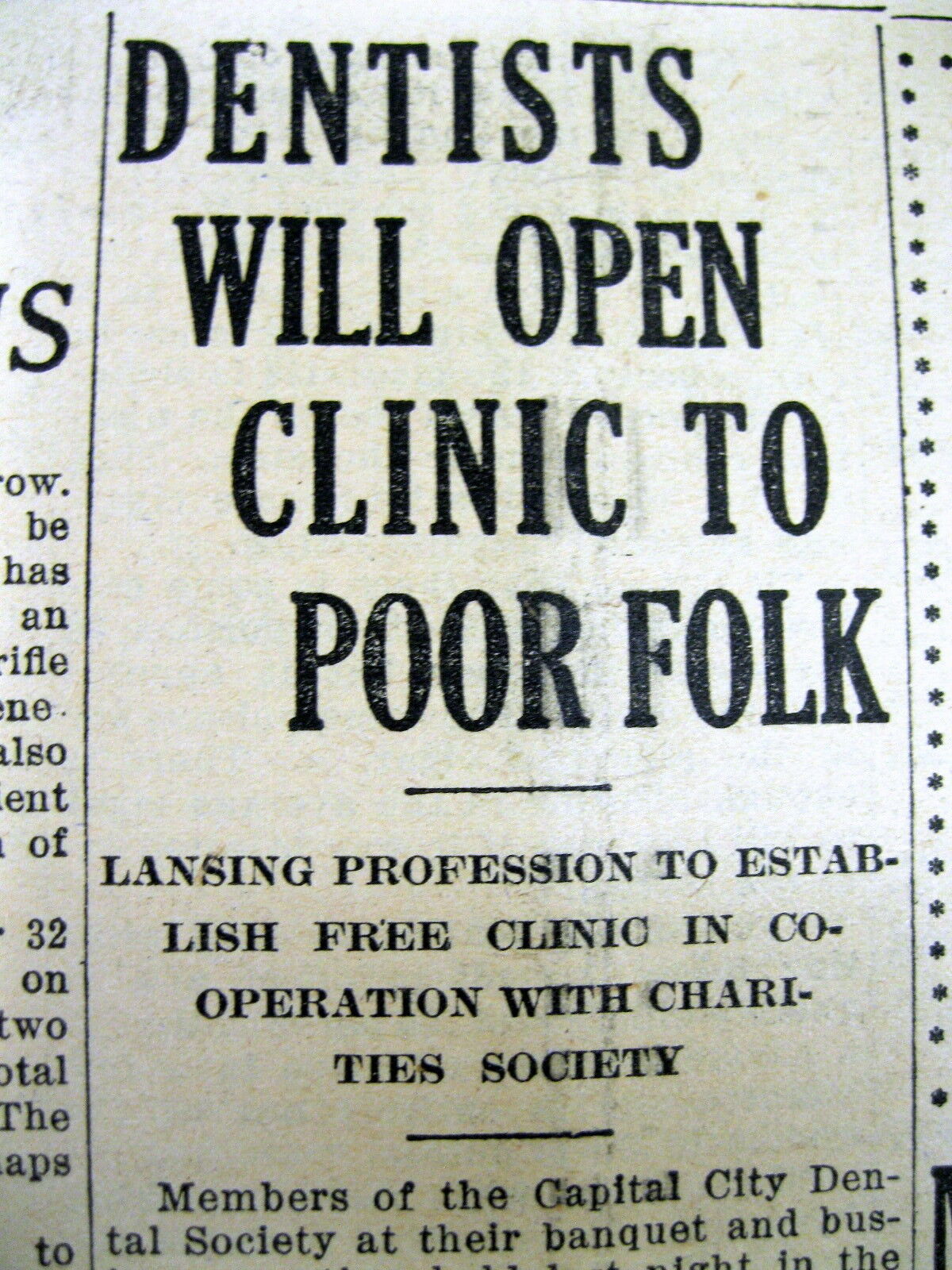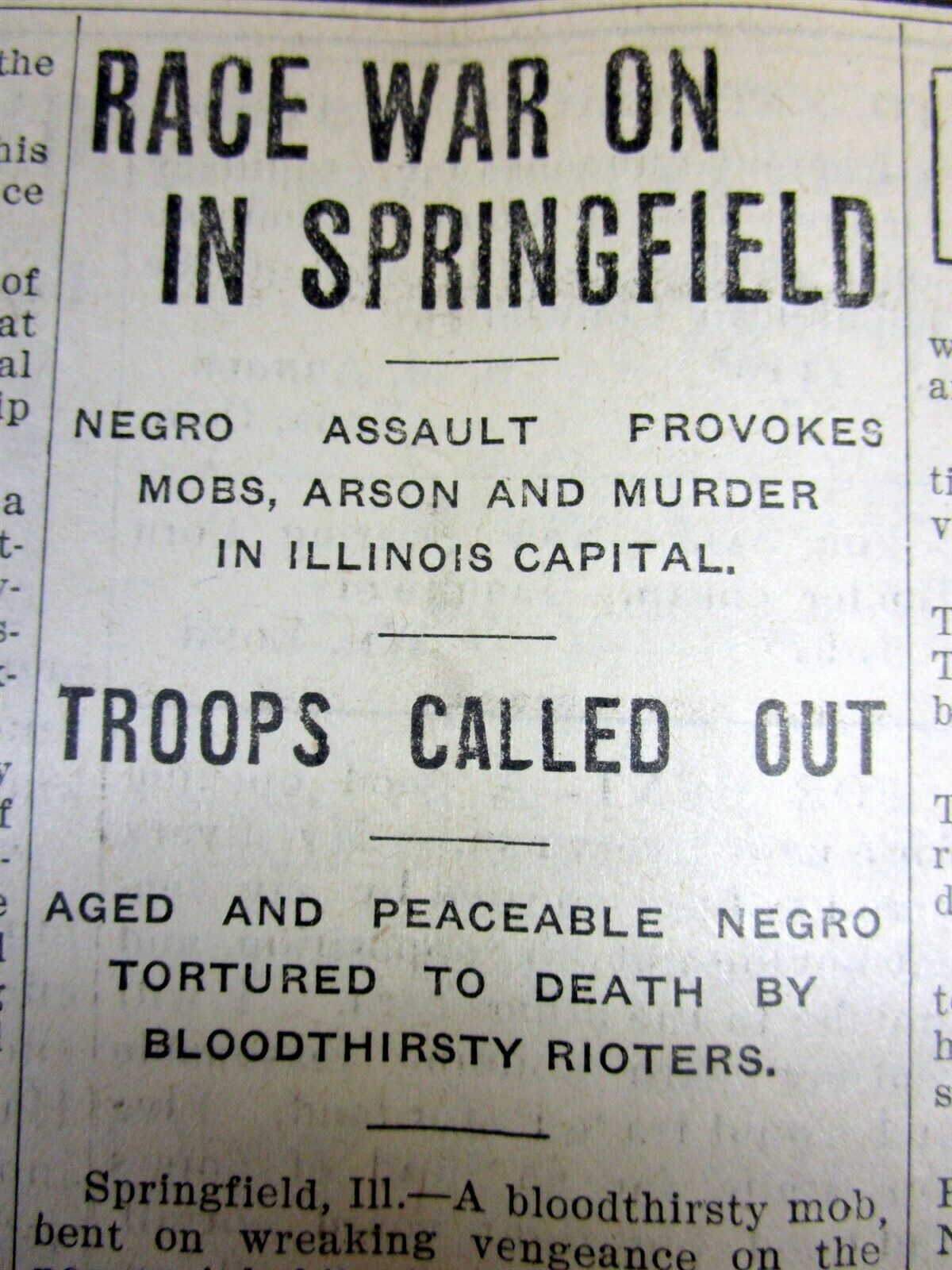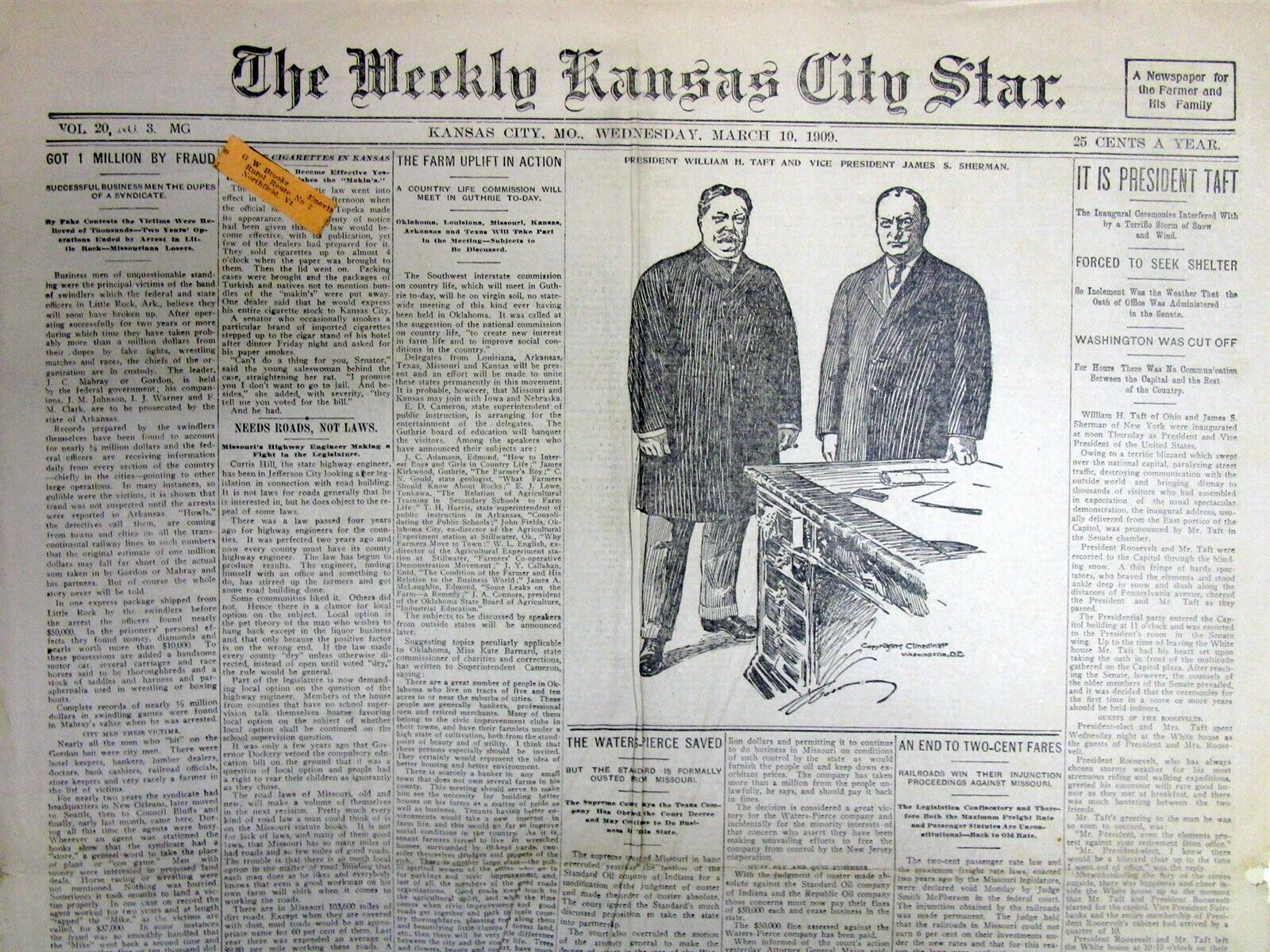-40%
4 1919 newspapers UPRISING in post WW I Germany - Its two leaders are killed
$ 15.83
- Description
- Size Guide
Description
4 1919 newspapers SPARTACIST UPRISING in post WW I Germany - Its leaders KARL LIEBKNECHT & ROSA LUXENBURG are KILLED -inv # 1Y-203
Please visit our EBAY STORE for THOUSANDS of HISTORICAL NEWSPAPERS on sale or at auction.
SEE PHOTO----- Lot of four (4) COMPLETE, ORIGINAL NEWSPAPERs, the
Bridgeport Times
(CT) dated Jan 7, 10, 17, and 20, 1919.
These newspapers contain coverage of the
SPARTACIST UPRISING in Post WW I Germany
with the DEFEAT of the SPARATACISTS and the killing of their leaders KARL LIEBKNECHT and ROSA LUXEMBURG.
On the evening of 15 January, Luxemburg and Liebknecht were discovered in a Berlin-Wilmersdorf apartment, arrested and handed over to the largest Freikorps unit, the heavily armed Garde-Kavallerie-Schützen-Division. Their commander, Captain Waldemar Pabst, had them questioned. That same night, both prisoners were beaten unconscious with rifle butts and shot in the head. Rosa Luxemburg's body was thrown into the Landwehr Canal, where it was found on 1 June. Karl Liebknecht's body was delivered anonymously to a morgue.
The Spartacist uprising, also known as the January uprising, was a general strike (and the armed battles accompanying it) in Germany from 5 to 12 January 1919. Germany was in the middle of a post-war revolution, and two of the perceived paths forward were either social democracy or a council republic similar to the one which had been established by the Bolsheviks in Russia. The uprising was primarily a power struggle between the moderate Social Democratic Party of Germany (SPD) led by Friedrich Ebert, and the radical communists of the Communist Party of Germany (KPD), led by Karl Liebknecht and Rosa Luxemburg, who had previously founded and led the Spartacist League. This power struggle was the result of the abdication of Kaiser Wilhelm II and the resignation of Chancellor Max von Baden, who had passed power to Ebert, as the leader of the largest party in the German parliament. Similar uprisings occurred and were suppressed in Bremen, the Ruhr, Rhineland, Saxony, Hamburg, Thuringia and Bavaria, and another round of even bloodier street battles occurred in Berlin in March, which led to popular disillusionment with the Weimar Government.
As in November 1918, a second revolutionary wave developed on 4 January 1919 when the government dismissed the Police Chief of Berlin, Emil Eichhorn, who was a member of the USPD and who had refused to act against the demonstrating workers during the Christmas Crisis. The USPD, the Revolutionary Stewards and KPD took up Eichhorn's call for a demonstration to take place on the following day. To the surprise of the organizers, the demonstration turned into a huge, mass demonstration which also attracted the support of many Socialist Party members. On Sunday 5 January, as on 9 November 1918, hundreds of thousands of people poured into the centre of Berlin, many of them armed. In the afternoon the train stations and the newspaper district with the offices of the middle-class press and the SPD's "Vorwärts", which had been printing articles hostile to the Spartacists since the beginning of September, were occupied. Some of the middle-class papers in the previous days had called not only for the raising of more Freikorps but also for the murder of the Spartacists.
The leaders of the movement assembled at Police Headquarters and elected a 53-member "Interim Revolutionary Committee" (Provisorischer Revolutionsausschuss), which failed to make use of its power and was unable to agree on any clear direction. Liebknecht demanded the overthrow of the government. Rosa Luxemburg, as well as the majority of KPD leaders, considered a revolt at this moment to be a catastrophe and explicitly spoke out against it.
The leaders of the USPD and KPD called for a general strike in Berlin on 7 January, and the subsequent strike attracted about 500,000 participants who surged into downtown Berlin. Within the strike, some of the participants organized a plan to oust the more moderate social democrat government and launch a communist revolution. Insurgents seized key buildings, which led to a standoff with the government. During the following two days, however, the strike leadership (known as the ad-hoc "Revolution Committee") failed to resolve the classic dichotomy between militarized revolutionaries committed to a genuinely new society and reformists advocating deliberations with the government. Meanwhile, the strikers in the occupied quarter obtained weapons.
At the same time, some KPD leaders tried to persuade military regiments in Berlin, especially the People's Navy Division, the Volksmarinedivision, to join their side, however they mostly failed in this endeavour. The navy unit was not willing to support the armed revolt and declared themselves neutral, and the other regiments stationed in Berlin mostly remained loyal to the government.
On 8 January, the KPD resigned from the Revolutionary Committee after USPD representatives invited Ebert for talks. While these talks were taking place, the workers discovered a flyer published by Vorwärts entitled "Die Stunde der Abrechnung naht!" (The hour of reckoning is coming soon!) and about the Freikorps (anti-Communist paramilitary organizations) being hired to suppress the workers. Ebert had ordered his defense minister, Gustav Noske, to do so on 6 January. When the talks broke off, the Spartacist League then called on its members to engage in armed combat.
On the same day, Ebert ordered the Freikorps to attack the spartacists. These former soldiers still had weapons and military equipment from World War I, which gave them a formidable advantage. They quickly re-conquered the blocked streets and buildings and many of the insurgents surrendered. 156 insurgents and 17 Freikorps soldiers died during the fighting.
On the evening of 15 January, Luxemburg and Liebknecht were discovered in a Berlin-Wilmersdorf apartment, arrested and handed over to the largest Freikorps unit, the heavily armed Garde-Kavallerie-Schützen-Division. Their commander, Captain Waldemar Pabst, had them questioned. That same night, both prisoners were beaten unconscious with rifle butts and shot in the head. Rosa Luxemburg's body was thrown into the Landwehr Canal, where it was found on 1 June. Karl Liebknecht's body was delivered anonymously to a morgue.
Very good condition. This listing includes the 4 complete entire original newspapers, NOT just a clipping or a page of them. STEPHEN A. GOLDMAN HISTORICAL NEWSPAPERS stands behind all of the items that we sell with a no questions asked, money back guarantee. Every item we sell is an original newspaper printed on the date indicated at the beginning of its description. U.S. buyers pay priority mail postage which includes waterproof plastic and a heavy cardboard flat to protect your purchase from damage in the mail. International postage is quoted when we are informed as to where the package is to be sent. We do combine postage (to reduce postage costs) for multiple purchases sent in the same package.
We list thousands of rare newspapers with dates from 1570 through 2004 on Ebay each week. This is truly SIX CENTURIES OF HISTORY that YOU CAN OWN!
Stephen A. Goldman Historical Newspapers has been in the business of buying and selling historical newspapers for over 45 years. Dr. Goldman is a consultant to the Freedom Forum Newseum and a member of the American Antiquarian Society. You can buy with confidence from us, knowing that we stand behind all of our historical items with a 100% money back guarantee. Let our 45+ years of experience work for YOU ! We have hundreds of thousands of historical newspapers (and their very early precursors) for sale.
